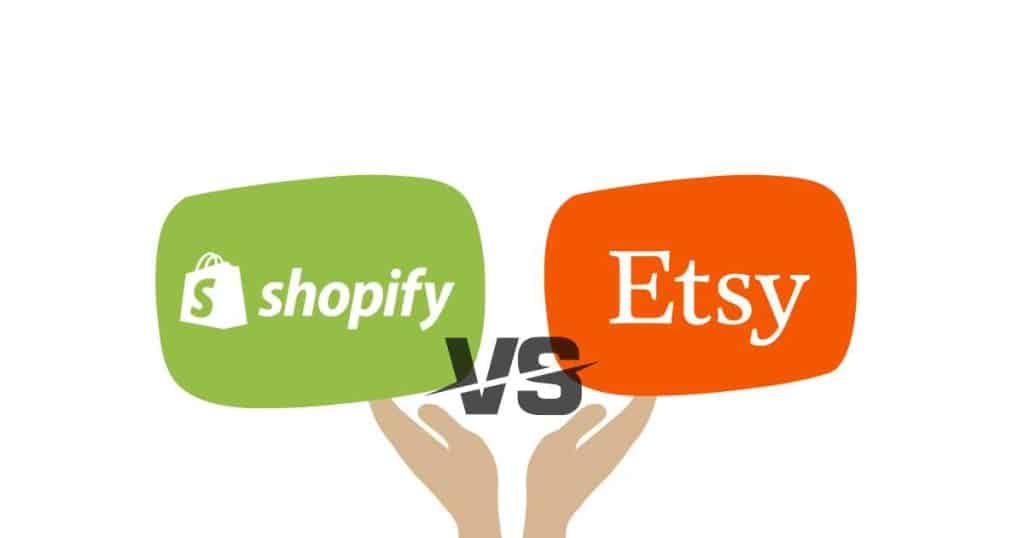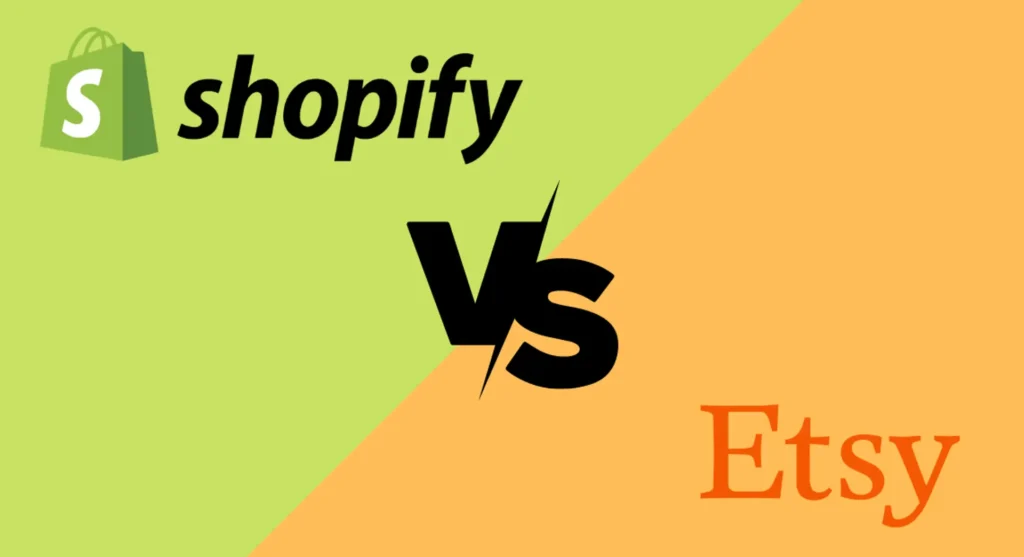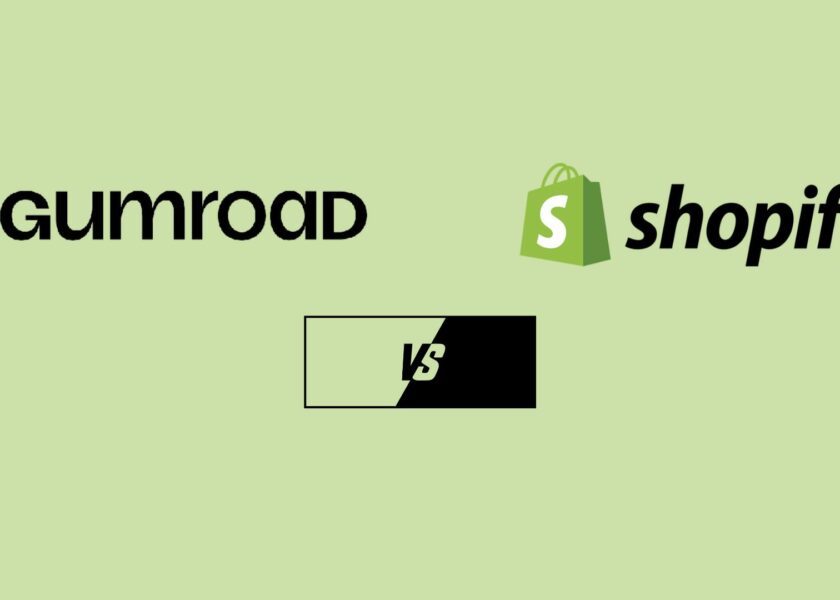Choosing the right platform to sell digital products can make or break your online business. With so many options available, Etsy, Gumroad, and Shopify stand out as three of the best platforms for creators, entrepreneurs, and digital product sellers. Each platform has unique features, pricing, and audience reach, making it essential to understand which one aligns best with your business goals. In this guide, we’ll compare Etsy vs. Gumroad vs. Shopify: 3 Best Platforms to Sell Digital Products, helping you determine the best option for maximizing your sales and scaling your business. 🚀

Sell Printables: A Beginner’s Guide. 30 MILLION Digital Products – Unlimited Creative Resources
1. Overview of Each Platform
When comparing Etsy, Gumroad, and Shopify as platforms for selling digital products, each offers distinct advantages and challenges.
Etsy is a popular marketplace for handmade, vintage, and digital goods. It provides sellers with an established audience, making it easier to reach customers. The main advantages include its massive user base, built-in traffic, and strong brand recognition. However, Etsy comes with fees: a $0.20 listing fee per item, a 5% transaction fee, and a 3% + $0.25 payment processing fee. The platform is highly competitive, and standing out among thousands of sellers can be difficult. Despite this, Etsy is ideal for creators who want a large, ready-made audience and don’t mind paying for the exposure.
Gumroad is a straightforward platform that focuses on simplicity for digital creators, offering products like eBooks, templates, and art. Gumroad allows for easy setup, low fees, and no upfront cost. The platform charges a transaction fee ranging from 3.5% + $0.30 for free users to 8.5% + $0.30 for paid users, depending on the plan. The benefits of Gumroad include complete control over branding, customizable landing pages, and subscription options. However, it lacks the built-in audience that Etsy provides, meaning sellers must drive their own traffic. It’s best for creators who want simplicity and control but are comfortable investing in marketing to build an audience.
Shopify offers a comprehensive e-commerce solution where users can create their own online store to sell digital products. Shopify allows for total control over branding, design, and customer experience. With flexible pricing, plans start at $39/month, but transaction fees (ranging from 2.9% + 30 cents for the basic plan) are applicable for each sale. Shopify offers extensive tools for managing inventory, tracking sales, and integrating with other platforms, making it ideal for businesses that want to scale. The downside is the cost, which can be prohibitive for smaller creators, and the need for effective marketing to drive traffic to the store. Shopify is best suited for those who are ready to commit to a long-term, scalable business model.
In summary, Etsy is great for those seeking a ready-made audience but comes with higher fees and competition; Gumroad is ideal for those seeking simplicity and control with lower fees but requires self-promotion; and Shopify is the most comprehensive and scalable option for creators looking to build their own brand, though it comes with ongoing costs and the need for marketing efforts.
2. Ease of Use & Setup
When evaluating the ease of use and setup of Etsy, Gumroad, and Shopify, each platform offers different levels of complexity and convenience for sellers.
Etsy is widely regarded as user-friendly, with a streamlined process for setting up a shop. The platform guides you step-by-step through listing products, creating an attractive storefront, and handling transactions. Its intuitive interface is designed for beginners, making it easy to get started, even for those with limited tech experience. The downside is that there are restrictions on customization and branding, and the listing and transaction fees can add up. However, for sellers looking to quickly reach an established audience without technical hurdles, Etsy provides a smooth and simple experience.
Gumroad is known for its incredibly simple and straightforward setup. You can start selling digital products within minutes, and the platform’s minimalist interface ensures that you don’t get bogged down with unnecessary complexity. Gumroad is highly effective for creators who want to focus purely on the product without worrying about site design or configuration. While it’s easy to use, it lacks some of the customization features that other platforms offer. For example, you can create basic landing pages but can’t design a full-scale store. It’s ideal for those who prioritize ease of use over extensive customization but may not be suitable for sellers seeking to build a more complex brand presence.
Shopify offers the most flexibility in terms of customization and features, but this comes at the cost of a more complex setup. While Shopify provides numerous themes, tools, and integrations to build a professional online store, beginners may find the initial setup challenging. It involves choosing a plan (starting at $39/month), customizing the store design, setting up payment gateways, and integrating apps. Although Shopify offers in-depth support and tutorials, it requires more time and effort to configure. The platform excels for sellers who are looking for full control over their store’s look and functionality and who are willing to invest the time to learn how to manage the platform.
In conclusion, Etsy offers the easiest setup for those seeking a straightforward and fast entry into selling, with limited customization options. Gumroad is also simple to use but offers fewer features for branding and design. Shopify provides the most customization and scalability but has a steeper learning curve and higher upfront costs. The right choice depends on whether you prioritize simplicity, control, or long-term scalability.

3. Cost & Fees
When comparing the cost and fees of Etsy, Gumroad, and Shopify, each platform has its own pricing structure that affects the overall experience for sellers.
Etsy has a relatively low barrier to entry with a $0.20 listing fee per item, which is paid each time you post a product. On top of that, Etsy charges a 5% transaction fee and a 3% + $0.25 payment processing fee on each sale. While this makes Etsy affordable to start, the costs can accumulate as you grow your store, particularly if you have a large number of listings or high sales volume. The advantage of Etsy, however, is its massive built-in audience, which can justify the fees for many sellers. However, the high competition means you’ll need to invest time and possibly money in marketing to stand out.
Gumroad offers a simple fee structure: it charges 3.5% + $0.30 per transaction for free users. If you subscribe to the Pro plan ($10/month), the fee reduces to 3.0% + $0.30 per transaction, which makes it an appealing choice for creators who need a straightforward platform with low overhead costs. There are no upfront costs or listing fees, so you can quickly begin selling. However, the downside is that Gumroad’s features are somewhat limited in comparison to more robust platforms like Shopify, especially when it comes to customization and advanced e-commerce tools. For creators with a small product catalog and a manageable sales volume, Gumroad’s pricing is highly competitive.
Shopify has a more structured pricing model, with plans starting at $39 per month for the Basic plan. Each plan comes with a monthly fee but offers more features and tools for scaling your business. Shopify charges transaction fees that range from 2.9% + 30 cents for online credit card payments (basic plan) and 2.7% for in-person sales, unless you use Shopify Payments (their payment gateway, which eliminates external processing fees). If you use third-party payment gateways, Shopify charges an additional 2% fee. This makes Shopify more expensive upfront, especially for small businesses or creators just starting, but it offers a much more comprehensive suite of tools for those who are ready to invest in a long-term, scalable business.
In summary, Etsy is affordable for beginners but comes with multiple fees that can add up, especially for high-volume sellers. Gumroad is the most cost-effective option for small-scale sellers, with low fees and no monthly costs, though it sacrifices some advanced features. Shopify is the most expensive of the three, but it offers a complete e-commerce platform with a range of tools for growing your business, making it suitable for sellers who are serious about scaling. The right platform depends on your business model, growth ambitions, and willingness to pay for advanced features.
4. Customization & Branding
When it comes to customization and branding, Etsy, Gumroad, and Shopify each offer different levels of flexibility for sellers, with varying degrees of control over how your store looks and feels.
Etsy provides limited customization options, as the platform is designed to be straightforward and user-friendly. Sellers can add logos, banners, and custom shop policies, but overall, the design choices are constrained by Etsy’s template system. This is great for beginners who want a simple, no-fuss setup, but it can feel restrictive for those who want a highly personalized or unique look for their store. While Etsy allows you to create an attractive storefront within its guidelines, your branding will always be somewhat limited by Etsy’s overall design aesthetic and the need to fit into the larger marketplace. This can make it harder to establish a distinctive identity compared to standalone e-commerce platforms.
Gumroad, on the other hand, gives you more control over your product pages, allowing you to upload your own branding elements like logos and images. You can also customize your landing page to some extent, but it remains a relatively basic design, focusing mainly on simplicity. While Gumroad is flexible for those who want a clean, minimalistic look, it lacks the ability to create a fully branded website or deeply customized user experience. The Pro plan ($10/month) offers more features, but the overall customization is still limited compared to platforms like Shopify. Gumroad is best for creators who prioritize ease of use over intricate design but want some basic branding tools to make their store recognizable.
Shopify excels in terms of customization and branding. With a wide range of themes (both free and paid), you can fully design and customize your online store, including colors, fonts, layout, and product pages. Shopify gives you complete control over the store’s look and feel, allowing you to create a unique and professional brand experience. It also offers advanced features like custom domains, third-party app integrations, and the ability to add custom code if you’re familiar with HTML and CSS. However, this level of customization comes at a cost. While the platform offers powerful design tools, it requires more effort and technical know-how to make the most of them. For creators looking to build a fully branded and scalable business, Shopify is the best option, but it does require more time and investment.
In summary, Etsy offers basic customization that’s easy to use but restrictive in terms of branding, Gumroad allows for minimal branding with more control than Etsy but lacks in-depth customization, and Shopify provides the most extensive branding options, allowing for a completely personalized and professional store but with a steeper learning curve and higher costs. The best choice depends on how much customization you need and how much time and effort you’re willing to invest in creating a unique brand identity.

5. Audience & Traffic
When evaluating audience and traffic potential, Etsy, Gumroad, and Shopify each offer different experiences, especially in terms of how sellers can attract and engage customers.
Etsy stands out for its large, built-in audience. As one of the most popular marketplaces for handmade, vintage, and digital goods, Etsy draws millions of shoppers every month, which means your products are immediately exposed to a vast pool of potential buyers. This built-in traffic is a significant advantage for sellers, especially those just starting out. However, the flip side is that Etsy is highly competitive, and standing out among thousands of similar products can be challenging. While Etsy’s search algorithms and advertising tools can help, you’ll still need to invest time and effort into optimizing your listings, using keywords effectively, and possibly paying for promoted listings to ensure visibility. Still, for many, Etsy’s audience is its strongest selling point.
Gumroad provides a much smaller built-in audience compared to Etsy. While it is known for being a platform for creators, the traffic isn’t nearly as vast. Sellers are largely responsible for driving their own traffic, meaning that successful sales often depend on external efforts like social media promotion, email marketing, and collaborations. The benefit of Gumroad, though, is that once you’ve built an audience or established a following, you can sell directly to your customers with minimal competition. It’s an excellent platform for creators who already have an existing fanbase or for those who are comfortable building their own traffic from scratch. For those without a large following, though, attracting customers may be a more significant challenge compared to platforms like Etsy.
Shopify offers the most control over your audience, as it’s a standalone e-commerce platform where you own your store and its traffic. While Shopify does not provide a built-in audience like Etsy, it allows you to focus on building your own customer base through SEO, social media, paid ads, and email marketing. The downside is that driving traffic to your store is entirely your responsibility. Shopify provides robust tools to help with SEO and marketing, but it can be a slower and more expensive process to build an audience compared to platforms with built-in traffic. However, once you establish your brand and attract customers, you have full control over your sales and data, and there is no competition from other sellers on the same platform.
In summary, Etsy offers the most immediate audience and traffic, but with high competition, making it ideal for those who want quick exposure. Gumroad has the smallest built-in audience but gives sellers more freedom and control over their brand and customer relationships, making it perfect for those who can drive their own traffic. Shopify requires the most effort to build traffic since it doesn’t come with a built-in audience, but it offers the greatest long-term potential and control over your brand’s growth. The choice between these platforms depends on how much effort you’re willing to invest in marketing and whether you prioritize immediate traffic or long-term brand building.
Sell Printables: A Beginner’s Guide. 30 MILLION Digital Products – Unlimited Creative Resources
Conclusion/Summary
In conclusion, Etsy, Gumroad, and Shopify each offer unique advantages and challenges for sellers, depending on their goals and business needs. Etsy is ideal for those seeking quick access to a large, built-in audience with minimal setup, though it comes with high competition and additional fees. Gumroad is perfect for creators who want a simple, low-cost platform with control over their branding, but it requires sellers to drive their own traffic. Shopify offers the most customization and scalability, making it the best choice for long-term growth and those looking to build a unique brand, though it comes with higher upfront costs and requires more effort to generate traffic. Ultimately, the best platform depends on your product, marketing strategy, and how much time and investment you’re willing to make in growing your business.
